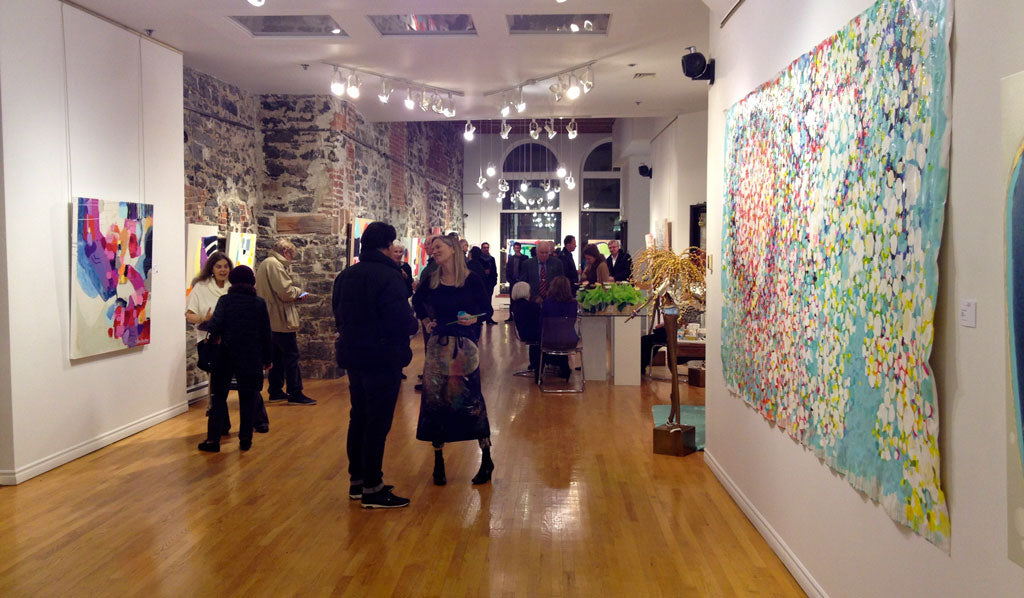Breaking into the gallery scene can feel like a huge step in an artist’s journey. While it can be daunting, having your work represented in galleries not only builds your professional portfolio but also connects your art with a broader audience. Over the years, I've learned that a thoughtful approach to gallery representation can make all the difference. Here are some do’s and don’ts that might help you along the way.

Do: research the right galleries
Not every gallery is the right fit. Research ones that align with your style, medium, and professional goals. Look into the artists they currently represent and the types of exhibitions they host. Visiting galleries in person, if possible, will give you an immediate sense of whether they resonate with your work and values.
Don’t: submit your work blindly
Sending unsolicited portfolios or samples to every gallery you find rarely works. Gallery curators and directors are busy and appreciate a focused approach. A personalized submission demonstrates that you’re thoughtful and intentional. If you take the time to find the best galleries for your style, your chances of connecting with them improve significantly.

Do: attend openings and art events
Gallery openings and art events are excellent opportunities to meet curators, gallery owners, and other artists. These spaces aren’t just for networking; they allow you to observe the gallery's style, the type of art they exhibit, and how artists are represented. Building genuine relationships within these circles can make a difference in how and when you’re introduced to gallery spaces.
Don’t: be overly pushy
Building connections is essential, but avoid coming on too strong or overly promoting your work right away. Let these relationships develop naturally. Instead of focusing on selling yourself, stay curious about the gallery, the art, and the people you meet. This is a long game, and gallery owners appreciate authenticity over a hard sell.

Do: build an impressive portfolio and online presence
Galleries want to see a body of work that reflects consistency, quality, and your unique voice as an artist. Having a strong portfolio and online presence—including a clean, easy-to-navigate website and an active social media account—gives galleries a way to see and share your work before they meet you. A well-curated online gallery is often a gallery director’s first impression of you, so make it count.
Don’t: let rejection stop you
Rejections are part of the process; they don’t define your worth or your work. Each “no” is an opportunity to improve, grow, and find a better fit. Gallery spaces are limited, and not every submission aligns with their current needs. Persistence, resilience, and a willingness to keep growing will help you stay motivated as you pursue your goals.

Do: present yourself professionally
From your email communications to portfolio materials, professionalism matters. Use a respectful, concise approach when reaching out to galleries. If you’re meeting in person, be prepared to talk about your art—your inspirations, your process, and what drives you. Show that you are as dedicated and thoughtful as your art suggests.
Don’t: rush your work
Galleries are looking for completed work that reflects an artist’s commitment to their craft. Take the time to create pieces that you’re proud of, that represent your artistic voice, and that feel authentic to you. Rushing to meet a gallery’s submission deadline with work that doesn’t reflect your best may do more harm than good.

Do: stay open to feedback
Feedback from gallery curators or directors is invaluable. If they give you advice, whether it’s about your style, presentation, or something else, take it seriously. Their insights can help you grow as an artist and get closer to your goals. Even constructive criticism is a sign that they see potential in you and want to help you succeed.
Don’t: lose sight of your unique voice
While it’s good to adapt based on feedback and industry trends, remember to stay true to your artistic voice. Your perspective and approach are what set you apart. Galleries are drawn to artists with a clear, authentic vision. Hold on to what makes your work distinct and meaningful to you.

Getting into galleries is a journey that combines patience, persistence, and a willingness to learn along the way. There isn’t a one-size-fits-all approach, but by following these do’s and don’ts, you’ll set yourself up for opportunities to make meaningful connections in the art world. Stay committed to your craft, keep growing, and, most importantly, believe in the value of your unique perspective as an artist.

2 comments
Insightful info. Am still defining my “style” so not ready to approach galleries; however am exhibiting in juried shows with awards, so hopefully can get my act together soon! Love your work!
Clare …fellow artist from Stowe…Jane and Pierre were friends. Love your work.